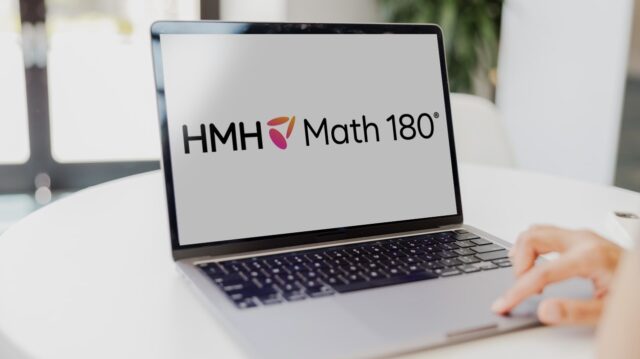
National Space Day is celebrated every year on the first Friday of May. This day was created to encourage observation of the many wonders of outer space. If your students’ interest in math and science is waxing or waning, the moon, sky, and planets are a great place to spark their interest in STEM learning.
By implementing a student-centric curriculum with plenty of hands-on activities, you can ensure that your student scientists remain engaged in their learning. To support your efforts and help you celebrate National Space Day, HMH Into Science and HMH Into AGA have provided free phases of the moon activities and lesson plan ideas to help turn your students’ eyes to the skies.
Teaching Phases of the Moon
Science Activities and Resources
HMH Into Science K–8 is a flexible, phenomena-based, student-centered science curriculum. For supportive and flexible resources for your phases of the moon lesson plan, HMH Into Science K–5 combines hands-on learning with ELA-based science instruction. To model the process of scientific exploration for students, the narrative stories in FUNomenal Readers support ELA standards and prepare students for further learning. Hands-on activities provide the class with a lesson to support their reading and put the student at the heart of the lesson.
HMH Into Science 6–8 was developed using student-centered labs with easy-to-source materials that provide deepened learning and greater flexibility. Students are actively doing science as they think critically and investigate, motivating them to explore further.
Grade 1 Science Leveled Reader
FUNomenal Reader: The Sky We Share
People have been observing the sky and its patterns for a very long time. In this Grade 1 FUNomenal Reader, students will learn about how people have been studying the sky throughout history and how we still study it today!
You can find lesson ideas on the second page of the reader that include previewing the story to find new words, or reviewing the pictures
to predict what the story is about.

Grade 1 Science Hands-On Activity
Hands-On Activity: Observe the Daytime and Nighttime Sky
In this hands-on activity, students can compare objects and observe patterns in the sky during the daytime and nighttime. Students will record observations, make a claim, and describe their evidence and reasoning to understand how the sky changes.

Grade 5 Science Leveled Reader
FUNomenal Reader: Searching for Sunrise
In this Grade 5 FUNomenal Reader, Rylie notices that the sun is rising later and later each day, she begins to research the sun’s patterns. When she notices that the moon seems to change shape each night, she turns back to her research to learn why.
Once students are done reading, explore further questions about other planets’ moons, Earth’s tilt, or the movements of constellations.

Grade 5 Science Hands-On Activity
Hands-On Activity: The Night Moves
Just like Rylie in Searching for Sunrise, your class can learn why the sky’s patterns shift depending on the time of year. Have students learn about orbits, revolutions, and patterns with these activities:
- Track the moon’s phases for a month by filling in the missing phases on the calendar.
- Chart the sun by the season and graph your findings.
- Study the position of the constellations and their visibility in the sky.

Grades 6–8 Hands-On Labs: Earth and Space Science
The following labs help middle schoolers physically model the movements of the sun, Earth, and moon in relationship to each other. Materials suggested for these labs include the following:
- Three-inch polystyrene foam ball
- Pen or pencil
- Marker
- Masking tape
- Light hanging from the ceiling
Model the Apparent Motion of the Sun
For this lab, students will work with a partner to better understand the Earth’s orbit around the sun. Once they are done modeling the Earth’s movements, they will analyze the results.
The View from Planet Earth Part 1: Lunar Phases
Once your students clearly understand the Earth’s orbit, this lab adds the moon’s movements to the equation. Further questions are provided once the students have modeled the rotations.
The View from Planet Earth Part 2: Eclipses
In this activity, students will be asked to model an eclipse, using what they’ve learned in their previous labs about the orbit of the Earth and moon in relation to the sun.

Download “Model the Apparent Motion of the Sun” Student Lab
Download “Model the Apparent Motion of the Sun” Teacher Guide
Download “A View from Planet Earth Part I” Student Lab
Download “A View from Planet Earth Part I” Teacher Guide
High School Math Activities and Resources
Challenge older students to study the moon from a different angle. By helping your students develop their reasoning before delving into
how a conclusion is reached, HMH Into AGA reinforces understanding of a
concept. In these mathematics lessons about the moon and Earth, your
class will practice their geometry and critical
reasoning skills.
Grades 9+ Geometry Math Activities
Angle Relationships in Circles
This small group activity has students study an image of the moon and the Earth and answer questions to build a shared understanding of the mathematical components of the picture.

Triangle Congruence Criteria
These exercises focus on the Cube Corner Retroreflectors (CCR) on the surface of the moon that were used during the Apollo missions for Lunar Laser Ranging (LLR) experiments. Have your students use their reasoning skills to discover more about the CCRs, LLR, and distance between the Earth and the moon.

Inspire your students to aim for the stars with these activities, and celebrate National Space Day with a lesson about the Earth, moon, and sky.
***
Looking for hands-on science lessons and activities for Grades K–8? Explore HMH Into Science K–5 and 6–8, flexible, phenomena-based, student-centered science solutions.
For a comprehensive Algebra 1, Geometry, and Algebra 2 curriculum, check out HMH Into AGA to support your students through high school, college, and career.












